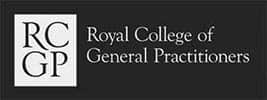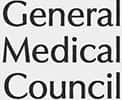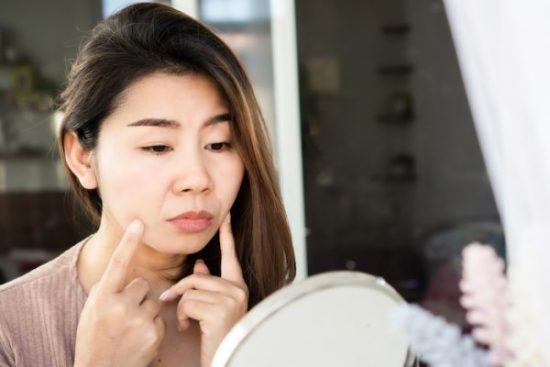
Updated June 2024
“How do I get rid of laugh lines?” is one of the most commonly asked questions at Harley Street MD. Laugh lines or smile lines are wrinkles that develop between the bottom of the nose and the corners of the mouth. As we age, we all experience fine lines and wrinkles. But laugh lines, also called nasolabial folds, are especially noticeable and can age your face drastically.
Wrinkles and lines form in different ways, which also affect how they should be treated. We categorise the two types of wrinkles on the face as dynamic and static. Dynamic wrinkles are the ones you see when you move your face and are temporary. You’ll notice them considerably more when you’ve been crying, at the end of the day, or when you feel tired or stressed. But they vanish following a restful night of sleep. However, static wrinkles such as your smile lines or the lines around your eyes will remain on your face no matter how much sleep you have.
Read on to learn more about laugh lines, what causes them and several treatment options, including smile line filler, that can help keep them at bay.
Despite their name, laugh lines are not solely caused by laughing or smiling. These deeper creases around the mouth and eyes typically form as you age, primarily due to the natural loss of skin volume and elasticity. Here are the main factors contributing to the development of laugh lines:
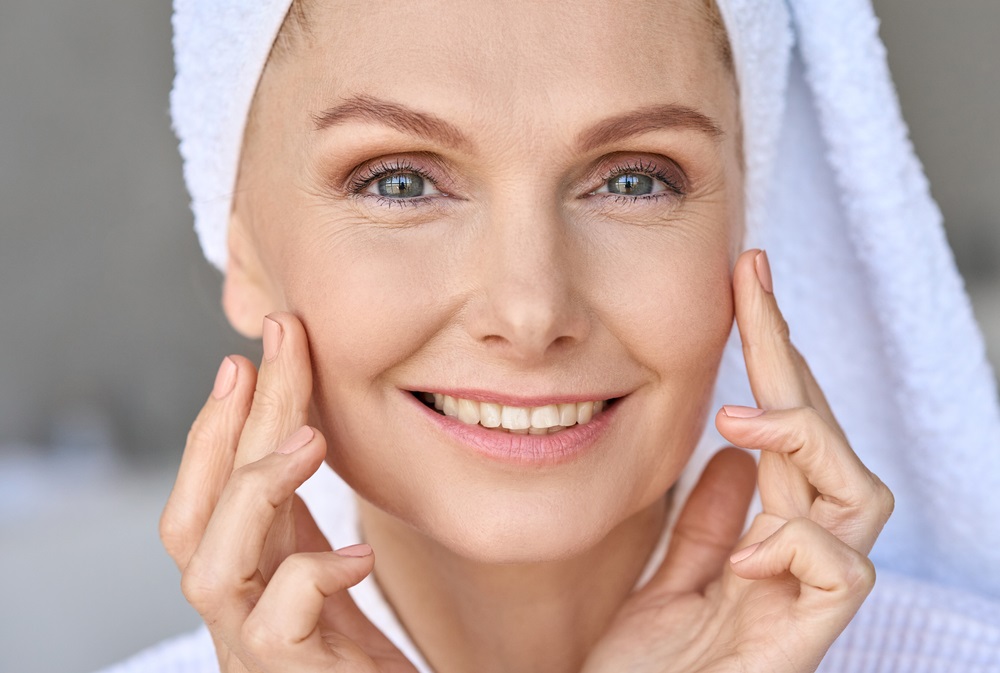
Altogether preventing dynamic smile lines is nearly impossible, as they are a natural part of facial expressions. However, you can take steps to delay the formation of deep static smile lines and reduce their appearance. Here are some effective ways you can help to reduce and get rid of laugh lines.
If you already have prominent laugh lines, you won’t be able to reverse them without a cosmetic treatment.
An effective skincare regime may improve the appearance of existing lines and give you more confidence in your overall appearance.
Here are the top seven products containing effective ingredients if you are worried about smile or laugh lines:
• Sunscreen: UV protection is critical to protecting your skin and staving off wrinkles and fine lines. For the best protection, opt for an SPF 50 or over and apply it daily to your face, neck, and the back of the hands.
Don’t be fooled by cloudy, rainy or dull days; UV rays can still reach your skin and cause damage. Daily usage of sunscreen helps to shield the skin, providing anti-ageing and overall benefits unrivalled by any comparable product.
• Retinol: Clinically proven to boost collagen production, enhance cell turnover, and reverse UV damage. Begin with a low-percentage retinol product to allow your skin to adjust. For higher-strength retinol products, always consult a professional for advice.
• Vitamin C: Topical vitamin C is proven to improve the appearance of wrinkles and may also help protect the skin from harmful ultraviolet (UV) rays when used alongside sunscreen. Vitamin C is a powerful antioxidant that boosts collagen production and improves the skin’s overall appearance.
• Peptides: Peptides comprise amino acids that can stimulate the skin to produce more collagen. Peptides can smooth, firm and hydrate the skin for an anti-ageing effect, giving you a bright, healthy and youthful look.
In one clinical study on peptide complex topical treatment conducted on female subjects over age 40, after just two weeks, significant improvements in the depth of wrinkles were measured by skin topography assessments.
• Alpha-hydroxy acids (AHAs): These are fruit acids that act as excellent exfoliators and boost cellular renewal. In addition to removing dead skin cells, AHAs have extraordinary effects on the dermis (the deeper layer of skin). They can help to fill and plump your skin by increasing collagen formation. AHAs are some of the most popular and extensively researched anti-ageing skincare ingredients.
Clinical studies have demonstrated the efficacy of these compounds in reversing the effects of photoaging, reducing wrinkles and increasing skin elasticity, tone and hydration. Utilised in treating dermatological conditions for around forty years, numerous skin problems, including acne, scarring, pigmentation, dry skin and wrinkles, can be addressed with AHA.
• Hyaluronic acid (HA): This powerful antioxidant and humectant is capable of retaining more than 1,000 times its volume in water. Used topically, numerous clinical studies have shown that it can help reduce the appearance of wrinkles and add plumpness to the skin.
HA is also the primary ingredient in the most widely used dermal fillers. This is because there is little chance that an adverse reaction will occur. After all, the ingredient is a biocompatible substance already present in the human body.
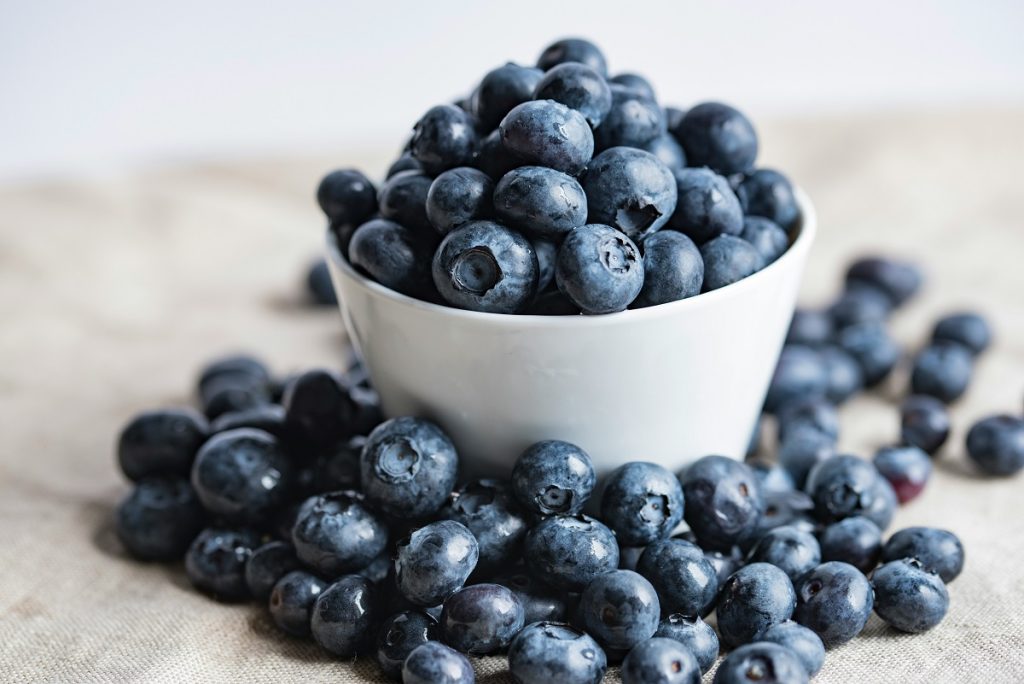
A healthy and balanced diet is essential for overall health and well-being. Here are some of the best foods, high in vitamins and other nutrients that support skin and may reduce the signs of wrinkles and laugh lines. Try adding these foods to your diet to ensure you are getting enough vitamin A, C, and E, minerals, polyphenols, carotenoids and fatty acids essential for healthy skin and collagen production.
• Broccoli: High in vitamins C and K, antioxidants, fibre, folate, lutein, and calcium
• Red bell peppers: Rich in carotenoids, with a high vitamin C content
• Spinach: Hydrating and brimming with antioxidants and vitamins A, C, E, and K, along with essential minerals like magnesium and iron
• Blueberries: Brimming with antioxidants and essential vitamins A and C
• Sweet potato: Packed full of beta-carotene, which is converted to vitamin A
• Watercress: Packed with vitamins A and C, antioxidants and important minerals like potassium and manganese
• Avocados: Rich in anti-inflammatory fatty acids, along with vitamins K, C, E, and A, as well as B vitamins and potassium
• Nuts: Many nuts, such as almonds, with their high vitamin E content and walnuts, rich in anti-inflammatory omega-3 fatty acids
• Pomegranates: A potent source of vitamin C and contain various potent antioxidants.
• Face Yoga: Face yoga can naturally smooth the area between your nose and mouth and reduce the appearance of laugh lines. This technique uses massage and facial exercises to lift and firm muscles, which can smooth lines and wrinkles.
• Don’t Sleep on Your Side: Sleeping on your side puts pressure on your face, making laugh lines more likely to appear. Try sleeping on your back for smoother, younger-looking skin.
• Stay Hydrated: Drinking plenty of water is essential to keep skin healthy and hydrated, contributing to plump skin.
• Don’t Smoke: Smoking contributes to a loss of collagen and skin elasticity, which is bad news if you don’t want to develop nasolabial folds. This lack of volume in the skin will cause laugh lines and other wrinkles to form as you age, and your skin will thank you if you quit.
• Procedure: A lower facelift is a surgical procedure aimed at rejuvenating the lower portion of the face, including the jawline and neck. The procedure is typically performed under a general anaesthetic and involves the removal of excess skin and tightening of underlying tissues and muscles to achieve a more youthful appearance.
• Cost: The cost of a lower facelift can vary widely depending on factors such as the surgeon’s experience, location of the clinic, and specific techniques used. On average, the cost ranges from £5,000 to £10,000. I would advise choosing a plastic surgeon who charges between the middle and higher end of this range.
• Recovery: Recovery time after a lower facelift typically involves initial swelling and bruising, which will last at least two weeks. Patients are advised to rest and avoid strenuous activities during this period. Full recovery, including the resolution of swelling, can take six to nine months.
• Results: Results of a lower facelift are noticeable once the swelling subsides, with continued improvement over the next 12 months as healing progresses. The procedure effectively reduces sagging skin and wrinkles in the lower face and neck, providing a more rejuvenated and defined facial contour.
• NB: In the UK, any type of surgeon can perform cosmetic surgery, and we recommend checking if your cosmetic surgeon is a fully qualified plastic surgeon listed on the GMC specialist register. If you decide to get a surgical facelift, be sure to research and never choose based solely on the patient before and after photos or star ratings on websites, which may be misleading.
• Procedure: The best treatment for deep laugh lines, without going under the knife, is arguably dermal filler injections. By carefully and precisely injecting laugh line filler into the nasolabial crease between your mouth and nose, we effectively “fill” wrinkles that have formed there to restore volume to the face. Our aesthetic clinic in London uses hyaluronic acid (HA) dermal fillers, which are incredibly safe and perhaps the easiest way to eliminate smile lines without cosmetic surgery.
• Cost: Laugh line treatment with HA fillers in London at Harley Street MD starts from £350.
• Recovery: Your skin may feel sore and be slightly red, but there is no downtime with laugh line filler treatment. The procedure will result in an instant lifting effect, but it could take up to two weeks for the full effect to be apparent.
• Results: Fillers gradually integrate with the surrounding tissues, leading to continuous improvement over the next four to six weeks. While the treatment is not permanent, the results typically last between six and eighteen months. Most patients require an annual top-up treatment to maintain their desired appearance.
• Procedure: Treatment with Botox injections restricts movement in targeted areas, temporarily paralysing the muscles that cause specific wrinkles to form. Although it can be used to improve the appearance of existing laugh lines, it tends to be more utilised as a preventative treatment.
• Cost: Treatment with Botox in London at Harley Street MD starts from £200.
• Recovery: You may experience some soreness after Botox treatment, but no downtime is necessary. While the procedure offers an instant lifting effect, it can take a couple of days for the full results to be fully noticeable.
• Results: The results are immediate and, while not permanent, typically last three to five months before a top-up treatment is needed. However, some patients may enjoy longer-lasting effects.
• Procedure: Treatment with laser removes the top layer of skin cells in targeted areas.
• Cost: The cost of laser treatment will vary depending on the type of laser, the clinic location and the treatment area. Treating laugh lines would require a full facial laser treatment.
• Recovery: For the first two days, the skin may appear red and swollen. Subsequently, peeling and flaking can continue for approximately five to eight days.
• Results: Laser treatments improve skin texture and appearance, tightening the skin while encouraging collagen production and cell regeneration.
Your skin typically becomes smoother and more toned within two to four weeks after treatment. The duration of results varies based on the treatment type and individual factors, but generally, the effects of laser skin resurfacing can last anywhere from two to five years.
• Procedure: Chemical peels are an effective treatment for laugh lines, deep lines and wrinkles. During this procedure, a chemical solution is applied to the skin to exfoliate the top layer, revealing a rejuvenated, healthy layer underneath.
• Cost: At Harley Street MD in London, chemical peels start at £150.
• Recovery: Recovery time varies depending on the peel’s strength and can range from 2 to 10 days. During this period, you may experience redness, flaking, and peeling skin.
• Results: Chemical peels stimulate cellular growth and increase collagen synthesis, which smoothes wrinkles and reduces pigmentation, resulting in a plumper and smoother appearance. Optimal results often require multiple treatments, and the effects typically last around 12 months.
• Procedure: Microneedling is a procedure where a roller with fine needles is used to create micro-injuries in the skin.
• Cost: At Harley Street MD in London, chemical peels start at £150.
• Recovery: There is no requirement for a recovery period or downtime; any redness that does occur will usually be mild and will typically fade in a couple of hours.
• Results: Microneedling causes the skin to become smoother and plumper by increasing collagen and elastin production. The benefits typically last about a year and require multiple treatments to reach best results.
The under-eye area is delicate and sensitive, making it crucial to select a qualified and experienced aesthetic practitioner for any cosmetic enhancements. Here are key considerations to help you find the right professional:
• Qualifications: Regulations in the UK regarding non-surgical cosmetic procedures are not stringent. There are no specific qualifications or training requirements for treatments like dermal fillers or chemical peels, allowing anyone to offer these services. It’s advisable to verify that your aesthetic practitioner is registered with regulatory bodies such as the:
Nursing & Midwifery Council (NMC)
General Dental Council (GDC)
General Medical Council (GMC)
• Advertising: Creating a polished website and social media presence is easy, and verifying the authenticity of recommendations and before and after photos can be challenging. Always confirm with the previously mentioned regulatory bodies, even if the practitioner claims to be a registered medical professional.
• Training: While most aesthetic practitioners undergo some form of training, attending short courses on dermal fillers is common. This might not be enough unless the practitioner is a qualified nurse, dentist, or physician who is knowledgeable about facial anatomy and injectable procedures.
• Experience: Experience varies widely among practitioners. While a medically registered professional with years of injection experience may have less experience than a non-medically registered practitioner, medical professionals typically possess a deeper understanding of injectable procedures and facial anatomy.
• Work Environment: Opt for aesthetic practitioners who work in reputable clinics rather than offering services at home. A commitment to a professional work environment often reflects a dedication to continuous development and high standards of practice.
• Consultation: A reputable aesthetic practitioner should always conduct a thorough consultation. They should review your medical history, discuss your goals, answer your questions, and explain treatment options. This ensures you make an informed decision about the most suitable treatment for your needs.
The research and study references we used, in addition to our internal research, are all referenced here; most of them have an external link to the scientific publication. We work hard to bring you the most recent, impartial, factual, and evidence-based information to help you make informed decisions.
• Valacchi G, Pecorelli A, Belmonte G, Pambianchi E, Cervellati F, Lynch S, Krol Y, Oresajo C. Protective Effects of Topical Vitamin C Compound Mixtures against Ozone-Induced Damage in Human Skin. J Invest Dermatol. 2017 Jun;137(6):1373-1375. doi: 10.1016/j.jid.2017.01.034. Epub 2017 Feb 17. PMID: 28219661. From: NIH
• Jeong S, Yoon S, Kim S, Jung J, Kor M, Shin K, Lim C, Han HS, Lee H, Park KY, Kim J, Chung HJ, Kim HJ. Anti-Wrinkle Benefits of Peptides Complex Stimulating Skin Basement Membrane Proteins Expression. Int J Mol Sci. 2019 Dec 20;21(1):73. doi: 10.3390/ijms21010073. PMID: 31861912; PMCID: PMC6981886. From: NIH
• Moghimipour E. Hydroxy Acids, the Most Widely Used Anti-aging Agents. Jundishapur J Nat Pharm Prod. 2012 Winter;7(1):9-10. Epub 2012 Jan 4. PMID: 24624144; PMCID: PMC3941867. From: NIH
• Ganceviciene R, Liakou AI, Theodoridis A, Makrantonaki E, Zouboulis CC. Skin anti-aging strategies. Dermatoendocrinol. 2012 Jul 1;4(3):308-19. doi: 10.4161/derm.22804. PMID: 23467476; PMCID: PMC3583892. From: NIH
• Michalak M, Pierzak M, Kręcisz B, Suliga E. Bioactive Compounds for Skin Health: A Review. Nutrients. 2021 Jan 12;13(1):203. doi: 10.3390/nu13010203. PMID: 33445474; PMCID: PMC7827176. From: NIH
• Facelift (rhytidectomy). From: NHS
